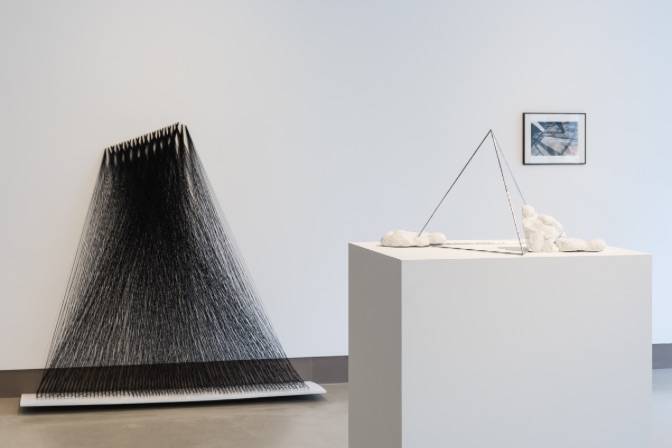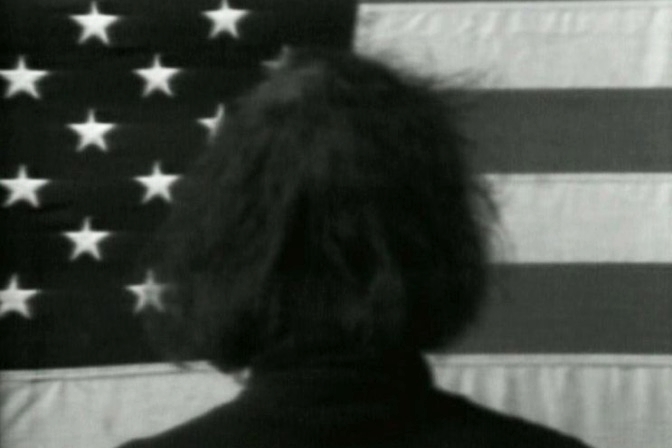Minimalist Anyway is a dialogue exhibition of two female artists of Japanese origin – Kazuko Miyamoto (b.1942, Tokyo) and Lydia Okumura (b. 1948, Brazil) – which brings together historical work from each artist’s time in New York in the 1970s, through to the mid 1980s. This exhibition takes as its point of departure Miyamoto’s off-hand observation that: ‘being Japanese you are minimalist anyway’. The exhibition reflects on how, set against a backdrop of Post-Minimalism and growing feminist and political movements in New York in the early 1970s, Okumura and Miyamoto were making work that constituted an ironic riff on Minimalism’s serialised, masculine and industrial character.
Each artist harnessed aspects of their own visual cultures – namely Miyamoto’s use of the Japanese dyeing technique, shibori, and Okumura’s engagement with Brazilian geometric abstraction and Japanese calligraphy – and focused on how, through the transformation of space, the viewer’s body could be implicated in the work. These concerns – namely an interest in perception, the hand-made, the body and performance – saw each artist forge their own singular paths, all the while in conceptual dialogue with Minimalist and non-representational practice.
The exhibition presents a selection of installation work by each artist, with particular focus on string and line sculptures, alongside smaller sculptures, works on paper and plans.
Speaking to their relative marginalisation within New York’s predominantly white, male community of artists working under the rubric of Minimalism at the time, both artists participated in a group exhibition co-curated by Miyamoto and Ana Mendieta called Dialectics of Isolation: An exhibition of Third World Women Artists in United States, 1980. Despite the striking affinity in their work, this was the only time Miyamoto and Okumura exhibited together. This politicised exhibition took place at A.I.R. gallery, a collaborative, artist-run organisation, which to this day shows all female artists. Miyamoto was for a long time involved in the running of the organisation, and also staged a series of solo exhibitions there. Both Miyamoto and Okumura’s background in collective and collaborative practice further distances them from the singular, individualist quality of Minimalist work.
Central to both artists’ practice is a dialogue between the body and the environment in which their sculptures are installed, underscoring the importance of time and manual labour; the intricacy of the hand-made perhaps suggests a subversive take on traditionally female forms of work.
The exhibition ran from 3 May – 10 June 2017.












